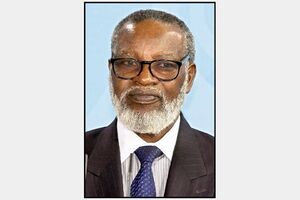
'Lüderitz(bucht)' in the south-west of the country. The 'Old District Court' in Swakopmund, 'Hans-Dietrich Genscher Street' in Katutura. Or the 'Welcome' at the lodge reception in the deep bush. Namibia holidaymakers are always amazed at the German influences in Namibia. The reason for this lies exactly 140 years ago to the day.
Major political event in Berlin. On 15 November 1884, representatives of the European colonial powers met in the capital of the German Empire. The summit meeting goes down in history as the Berlin Conference or Congo Conference (see Wikipedia ). The topic was the territorial claims of the colonial powers on the African continent.
The German Empire wanted to secure 'its' territories. This included Southwest Africa, the area between the Kunene River and the Gariep River (Oranje). It bordered the Portuguese colony of Angola to the north, the British Cape Colony to the south and the British protectorate of Bethschuanaland (now Botswana) to the east.
The British had already recognised the German claims to a large part of this territory on 14 July 1884. The British Walvis Bay was excluded from this. The enclave became part of the British Cape Colony.

A few months earlier, on 24 April 1884, the German Empire had taken the first step towards joining the circle of colonial powers. It had promised to protect the territories that the Bremen merchant Adolf Lüderitz had acquired in 1883.
German colonial era begins with a dishonest deal
This included the bay of Angra Pequeña (today: Lüderitzbucht) and the land within a radius of five miles. The price: 100 British pounds and 200 rifles. Added to this was the coastal strip between the 26th latitude and the Gariep River (Oranje), 20 miles inland from any point on the coast. Lüderitz paid 500 British pounds and 60 rifles for this.
In the purchase contracts that Lüderitz had concluded with the Nama captain Josef Frederik II of Bethanien, he had used the German mile. It was approx. 7.5 kilometres long and thus more than four times as long as the English mile (approx. 1.6 kilometres).
Frederiks naturally assumed that it was the English mile, which he knew from his dealings with Europeans in previous decades. Lüderitz let him believe this.
When it turned out that the area was much larger than expected, the Nama felt deceived. However, the German authorities rejected their protests against the unfair trade.
German colonial era ended in 1915
Initially, the Germans in South West Africa were primarily interested in mineral resources for their burgeoning industry. Later, there was also a need for land for German settlers. At a time of population explosion and industrialisation, several million Germans emigrated - mainly to the USA.
On 26 February 1885, the conference ended with the signing of the so-called Allgemeine Berliner Akte (Congo Act). Representatives of the affected African peoples were not present at the Congo Conference.
The German colonial period in South West Africa only lasted around 30 years. It came to an end with the surrender of the Schutztruppe on 7 July 1915 during the First World War. South Africa administered South West Africa until Namibia's independence in 1990 - in which the then German Foreign Minister Hans-Dietrich Genscher played a role.
Sven-Eric Stender



SUBMIT YOUR COMMENT